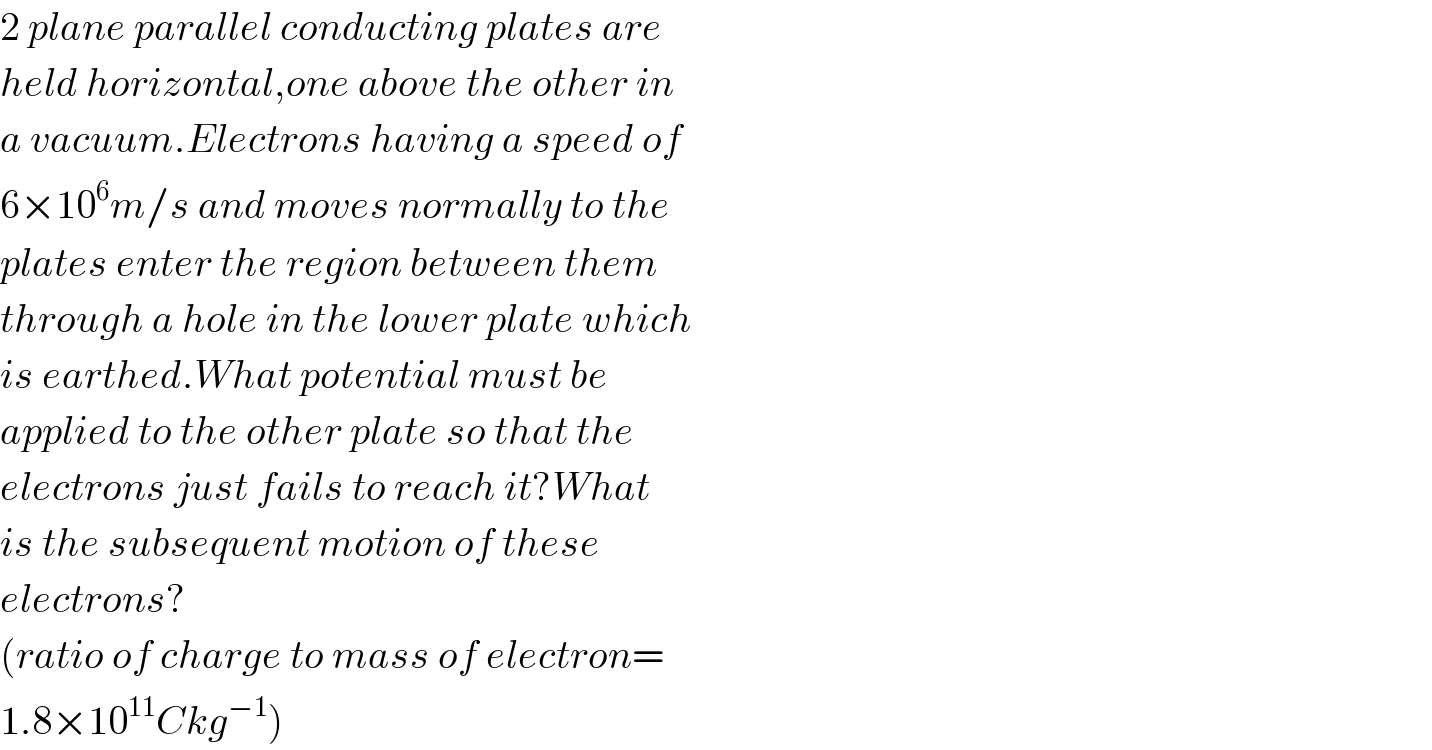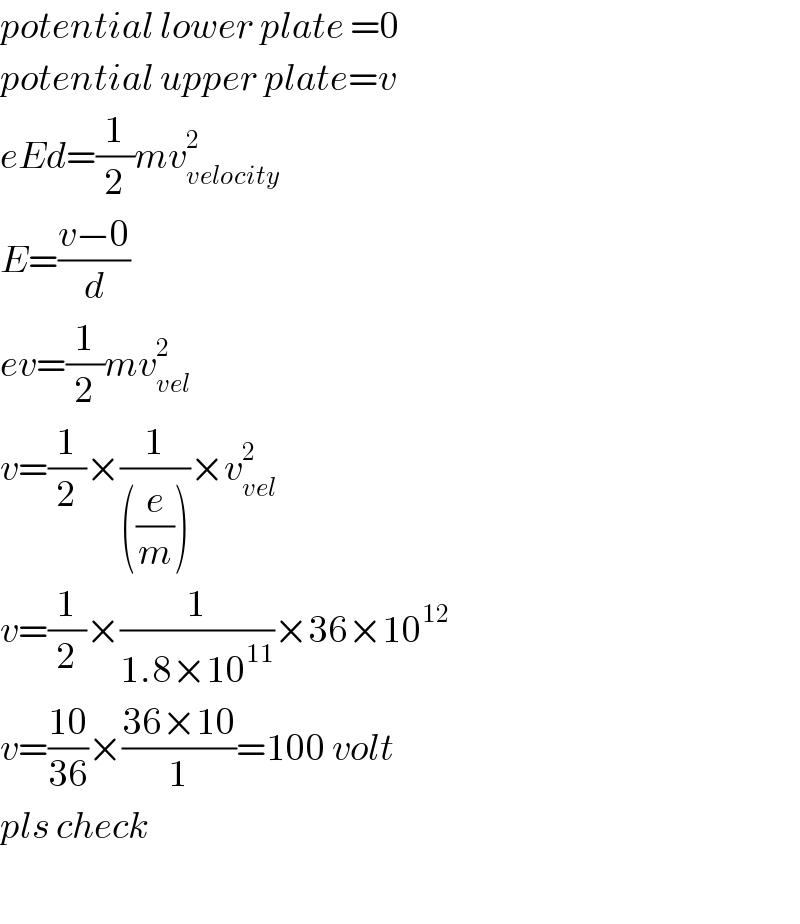Question Number 55431 by necx1 last updated on 24/Feb/19

$$\mathrm{2}\:{plane}\:{parallel}\:{conducting}\:{plates}\:{are} \\ $$$${held}\:{horizontal},{one}\:{above}\:{the}\:{other}\:{in} \\ $$$${a}\:{vacuum}.{Electrons}\:{having}\:{a}\:{speed}\:{of} \\ $$$$\mathrm{6}×\mathrm{10}^{\mathrm{6}} {m}/{s}\:{and}\:{moves}\:{normally}\:{to}\:{the} \\ $$$${plates}\:{enter}\:{the}\:{region}\:{between}\:{them} \\ $$$${through}\:{a}\:{hole}\:{in}\:{the}\:{lower}\:{plate}\:{which} \\ $$$${is}\:{earthed}.{What}\:{potential}\:{must}\:{be} \\ $$$${applied}\:{to}\:{the}\:{other}\:{plate}\:{so}\:{that}\:{the} \\ $$$${electrons}\:{just}\:{fails}\:{to}\:{reach}\:{it}?{What} \\ $$$${is}\:{the}\:{subsequent}\:{motion}\:{of}\:{these} \\ $$$${electrons}? \\ $$$$\left({ratio}\:{of}\:{charge}\:{to}\:{mass}\:{of}\:{electron}=\right. \\ $$$$\left.\mathrm{1}.\mathrm{8}×\mathrm{10}^{\mathrm{11}} {Ckg}^{−\mathrm{1}} \right) \\ $$
Commented by necx1 last updated on 24/Feb/19

$${urgently}\:{needed}\:{please}. \\ $$
Answered by tanmay.chaudhury50@gmail.com last updated on 24/Feb/19

$${potential}\:{lower}\:{plate}\:=\mathrm{0} \\ $$$${potential}\:{upper}\:{plate}={v} \\ $$$${eEd}=\frac{\mathrm{1}}{\mathrm{2}}{mv}_{{velocity}} ^{\mathrm{2}} \\ $$$${E}=\frac{{v}−\mathrm{0}}{{d}} \\ $$$${ev}=\frac{\mathrm{1}}{\mathrm{2}}{mv}_{{vel}} ^{\mathrm{2}} \\ $$$${v}=\frac{\mathrm{1}}{\mathrm{2}}×\frac{\mathrm{1}}{\left(\frac{{e}}{{m}}\right)}×{v}_{{vel}} ^{\mathrm{2}} \\ $$$${v}=\frac{\mathrm{1}}{\mathrm{2}}×\frac{\mathrm{1}}{\mathrm{1}.\mathrm{8}×\mathrm{10}^{\mathrm{11}} }×\mathrm{36}×\mathrm{10}^{\mathrm{12}} \\ $$$${v}=\frac{\mathrm{10}}{\mathrm{36}}×\frac{\mathrm{36}×\mathrm{10}}{\mathrm{1}}=\mathrm{100}\:{volt} \\ $$$${pls}\:{check} \\ $$$$ \\ $$
Commented by necx1 last updated on 24/Feb/19

$${very}\:{correct}.\:{Thank}\:{you}\:{sir}. \\ $$
